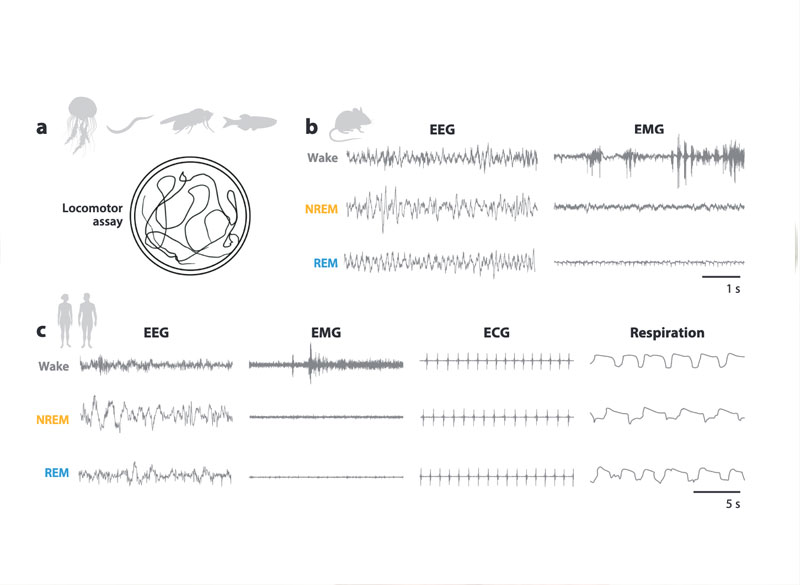Yang Dan named winner of the 2023 Scolnick Prize in Neuroscience
UC Berkeley Professor and Howard Hughes Investigator awarded for her discovery of mechanisms controlling sleep-wake states.

The McGovern Institute announced today that the 2023 Edward M. Scolnick Prize in Neuroscience will be awarded to neurobiologist Yang Dan. Dan holds the Nan Fung Life Sciences Chancellor’s Chair in Neuroscience at the University of California, Berkeley, and has been a Howard Hughes Investigator since 2008. The Scolnick Prize is awarded annually by the McGovern Institute for outstanding achievements in neuroscience.
“Yang Dan’s systems-level experimentation to identify the cell types and circuits that control sleep cycles represents the highest level of neuroscience research,” says Robert Desimone, McGovern Institute director and chair of the selection committee. “Her work has defined precise mechanisms for how motor behaviors are suppressed during sleep and activated during arousal, with potential implications for the design of more targeted sedatives and the treatment of sleep disorders.”
Significance of sleep
Dan received a BS in Physics in 1988 from Peking University in China. She then moved to the US to obtain her PhD in neurobiology from Columbia University, in 1994, under the mentorship of Professor Mu-Ming Poo. Her doctoral research focused on mechanisms of plasticity at the neuromuscular synapse and was published in Science, Nature, and Neuron. During this time, she showed that the quantal release of neurotransmitters is not unique to neuronal cell types and, as one example, that retrograde signaling from muscle cells regulates the synaptic strength of the neuromuscular junction. For her postdoctoral training, Dan joined Clay Reid’s lab at The Rockefeller University and then accompanied Reid’s move to Harvard Medical School a short time later. Within just over two years, Yang had collected and analyzed neuronal recording data to support and develop key computational models of visual information coding – her two papers describing this work have been cited, together, over 900 times.
Yang Dan started her own laboratory in January 1997 when she joined the faculty of UC Berkeley’s Department of Molecular and Cell Biology as an assistant professor; she became a full professor in 2005. Dan’s lab became known for discoveries of how sensory inputs, especially visual inputs, are processed by the brain to influence behavior. Using electrophysiological recordings in model animals and computational analyses, her group worked out rules for how synaptic plasticity and neural connectivity, at the microcircuit and brain-wide level, contribute to learning and goal-directed behaviors.

The Dan lab carved out a new research direction upon their discovery of mechanisms controlling rapid eye movement (REM) sleep, a state in which the brain is active and neuroplastic despite minimal sensory input. In their 2015 Nature paper, Dan’s group showed that, in mice, optogenetic activation of inhibitory neurons that project forward from the brainstem to the middle of the brain can instantaneously induce REM sleep. Since then, the Dan lab has published nearly a dozen primary research papers on the sleep-wake cycle that capitalize on the latest neural engineering techniques to record and control specific cell types and circuits in the brain. Most recently, she reported the discovery of neurons in the midbrain that receive wide-ranging inputs to coordinate active suppression of movement during REM and non-REM sleep with the release of movement during arousal. This circuit is key to the ability, known to exist in most animals, to experience sleep and even vivid dreaming without acting out. Dan’s discoveries are paving the way to a holistic understanding, from the molecular to macrocircuit levels, of how our bodies regulate sleep, an evolutionarily conserved behavior that is essential for survival.
Awards and honors
Dan was appointed as a Howard Hughes Medical Institute Investigator in 2008 and elected to the US National Academy of Sciences in 2018. She was awarded the Li Ka Shing Women in Science Award in 2007 and a Research Award for Innovation in Neuroscience from the Society for Neuroscience in 2009. She teaches summer courses at institutes around the world and has mentored 16 graduate students and 27 postdoctoral researchers, 25 of whom now run their own independent laboratories. Currently, Dan serves as an editorial board member on top-ranked science journals including Cell, Neuron, PNAS, and Current Opinion in Neurobiology.
Yang Dan will be awarded the Scolnick Prize on Wednesday, June 7, 2023. At 4:00 pm on that day, she will deliver a lecture titled “The how and why of sleep,” to be followed by a reception at the McGovern Institute, 43 Vassar Street (building 46, room 3002) in Cambridge. The event is free and open to the public.




